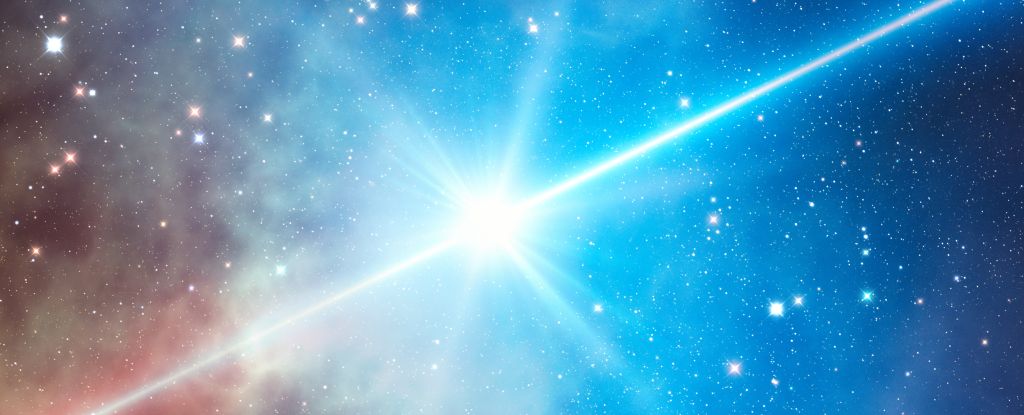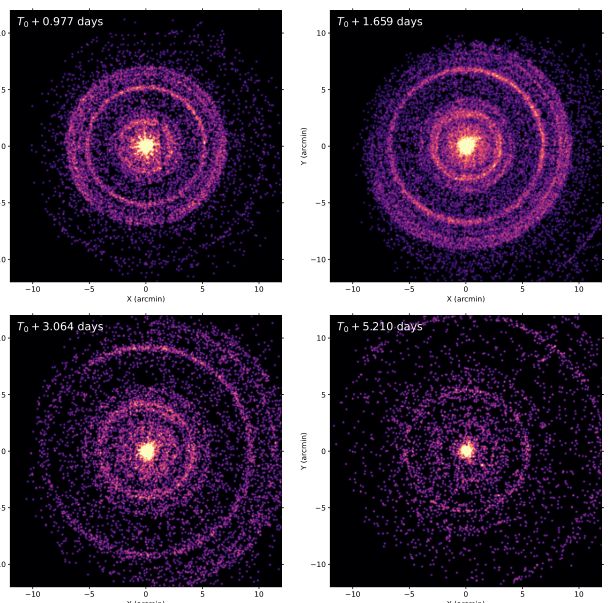An extraordinary space explosion, occurring only once in a millennium, has just been observed.
A gamma-ray burst that was detected in October 2022 and contained up to 18 teraelectronvolts of energy has been identified as an event that occurs once in a millennium. Named GRB 221009A, it is recognized as the most potent gamma-ray burst ever detected, and scientists have been eager to learn more about it.
Three papers have been submitted to The Astrophysical Journal Letters and analyses have begun to appear on the preprint server arXiv.

According to these analyses, the burst’s afterglow light curve does not conform to the predicted behavior, suggesting that GRB 221009A has unique and fascinating characteristics. Gamma-ray bursts are the universe’s most violent explosions, releasing more energy than the Sun would in ten billion years. They are caused by the cataclysmic events that occur at the end of massive stars’ lives or the collision of binary systems involving at least one neutron star.
GRB 221009A, which was initially thought to be a relatively weak flash of X-rays from a nearby source, was discovered to have traveled from much further away, meaning that it was much more powerful than previously believed. Astronomers tracked its light curve for 73 days until it was obscured by the Sun, and they expect it to reappear soon.

A group of astronomers, led by Maia Williams of Pennsylvania State University, has found that the X-ray afterglow of GRB 221009A was the most luminous ever detected by the Swift observatory, by an order of magnitude, in a paper they published. In a simulation of randomly produced bursts, only one in 10,000 was as powerful as GRB 221009A. When accounting for distance, the brightness of GRB 221009A was comparable to that of other gamma-ray bursts in the Swift catalog; however, others may seem dimmer because they are more distant. The rarity of GRB 221009A is due to its combined features, as estimated by the team. The team estimates that energetic and nearby GRBs, such as GRB 221009A, occur at a rate of less than or equal to one per 1000 years, making this a unique and noteworthy opportunity that is unlikely to be duplicated in our lifetime.
The unusual feature of the GRB is the evolution of its afterglow, which does not conform to the conventional theory. After gamma-ray bursts, there is usually a glow from electrons moving at near-light velocities. This synchrotron emission is the result of the shocks produced when the initial explosion strikes the interstellar medium. The gamma-ray bursts themselves are thought to be composed of energy that is concentrated in parallel rays, creating highly focused jets. Observing the subsequent synchrotron emission can assist astronomers in determining the explosion’s shape and jets.
Williams and her team propose that the complex afterglow of GRB 221009A may suggest that the jet structure of the gamma-ray burst is not narrowly collimated, or more intricate than initially thought. This peculiar feature challenges the standard understanding of the energy budget of the event.
In contrast, Laskar and his colleagues argue in their paper that the odd afterglow may imply that the current synchrotron afterglow theory may have some fundamental flaws. They also suggest that there could be an additional source of synchrotron emission in the afterglow of GRB 221009A.
In a third paper led by Shrestha, the afterglow’s unusual features are linked to the lack of certain characteristics that should be present in a supernova explosion, which may indicate that the majority of the energy budget was used for the jets. The supernova theory suggests that an exploding star could be responsible for the afterglow, but there is little evidence to support this claim.
The afterglow is expected to reappear from behind the Sun later this month and will still be visible in multiple wavelengths, providing a rare opportunity for astronomers to investigate further. The scientific community is eager to uncover the mysteries surrounding this extraordinary explosion.
The research papers have all been submitted to The Astrophysical Journal Letters, and are available on preprint server arXiv. They can be found here, here, and here.
Do not forget to share your opinion with us to provide you with the best posts !




Hi, I do believe this is an excellent blog. I stumbledupon it 😉 I will return once again since I bookmarked it. Money and freedom is the best way to change, may you be rich and continue to help other people.